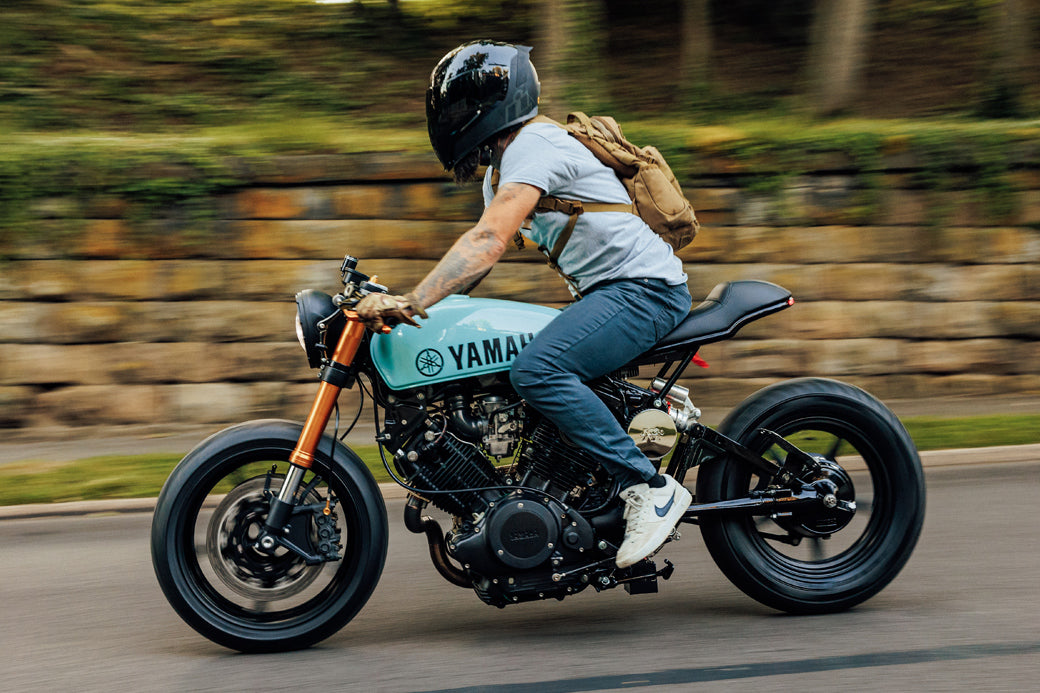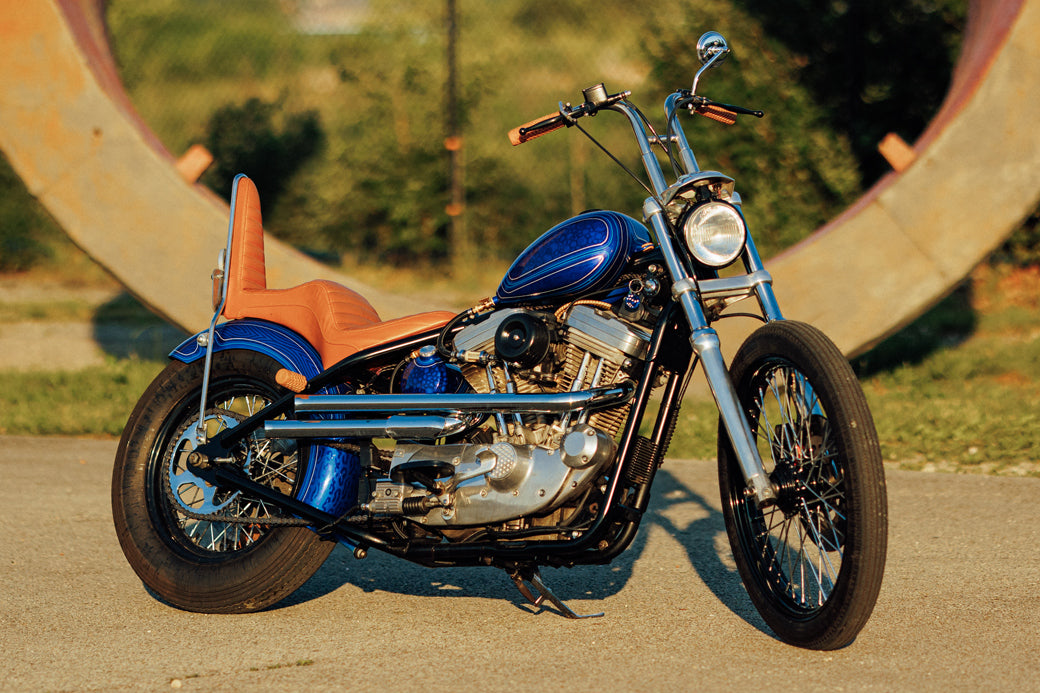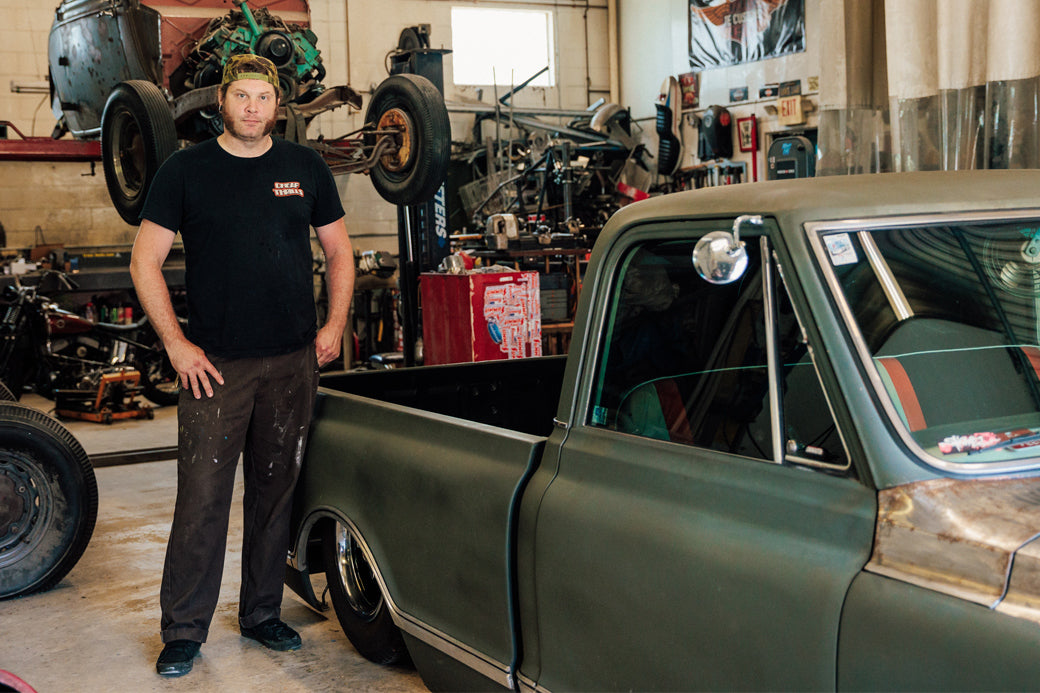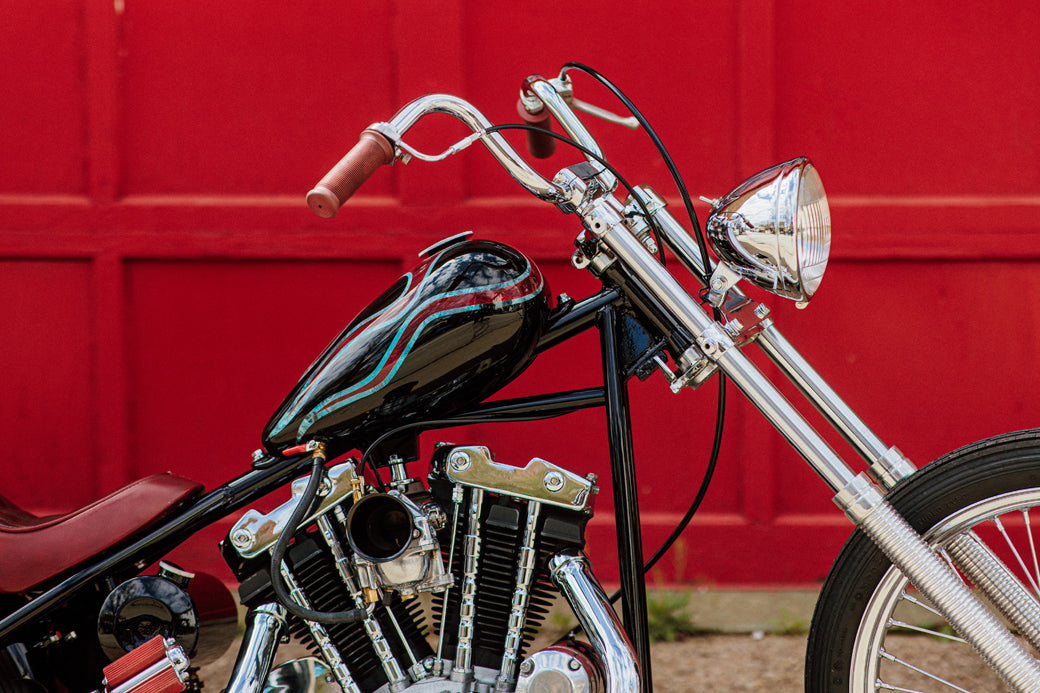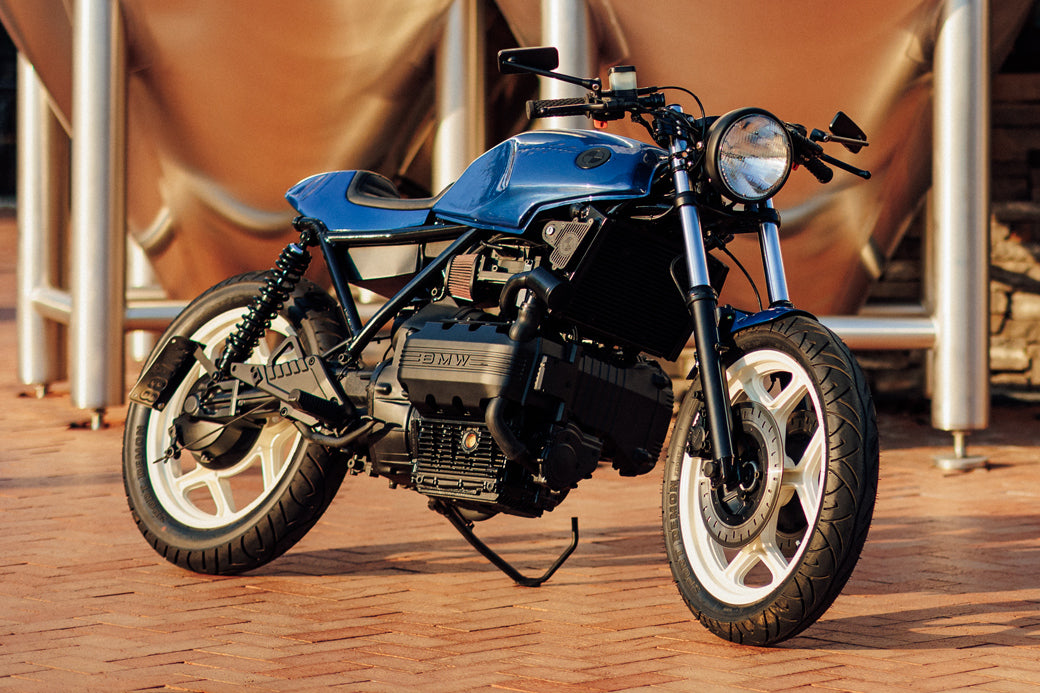Rick James: We bought the bikes used in the late 1960s. Some people call them the good old days, but I think of it as more of a learning experience. It turns out that doing things the hard way was a great way to learn. After beating the bikes up a bit, I figured we could build a couple of nice choppers. So, we tore them apart and started buying parts. Life got in the way, though, and they became literal basketcases in cardboard boxes. Every time we’d walk past the parts, it was like, man, I have to get this together. We grew up right out the road here, so this is where the bikes got their original damage.

Rick James: My plan back then was to build a righteous Bonneville chopper. I went ahead buying a bolt-on soft tail, 2-into-1 exhaust system, oil tank/battery box, and 16-inch rear wheel. My buddy, Darryl, donated the retro Z bars. I cut and welded the neck, kicking it out a few degrees to stretch and lower the front end a bit. It was then put away for fifty years as life moved on. My brother, Kent, had a similar story and timeframe, including a bolt-on soft tail for his Daytona.
Rick James: A few years back, we decided to get them together and ride into the sunset before it’s gone. We thought, what’s going to happen down the road with all of these parts? Who’s going to appreciate that bolt-on soft tail, you know? That ate at us. We had other bikes, but these had a special spot in our hearts. In agreement, we would build bikes we could ride. We bounced ideas off of each other and did a lot of the work together. While the Triumphs are only two years apart, they turned out to be very different mechanically. Our visions of designing dream bikes were also different, which is a very cool and unique part of building custom motorcycles.
Kent James: We just started picking parts up along the way at swap meets. That’s where I got the Bates seat, gas tank, rear fender, and other parts over the years. We would put the parts in a pile, but they were always on the to-do list. It just seemed like something that needed to be finished. Working together on it really helped us get them done. We’d do research and solve problems together.

Kent James: We started out with things like the electronics. Both motors were rebuilt. They both have the same rear ends on them, but I had to put a chain adjuster on mine to avoid the frame and cut the rear fender since it was too wide. His is a 650cc and mine is a 500cc, so it’s a little smaller and lower. I’m using a Ceriani front end with a stock front wheel and modified stock fender. The handlebars, headlight, oil tank, and a lot of the odds and ends were all from swap meets. I was aiming for comfort with this bike.
Rick James: I thought I’d build a rat bike at first, but after I started molding the frame, I decided I had to go the whole way. We didn’t want the builds to be too fancy, but it’s hard to put a price on molding the frame. That’s a Cole Foster gas tank from a Harley-Davidson. The opening was wide, so I had to weld and putty that in to get it close to the frame. Building the electrical boxes was also a complicated task that took three or four times to get right. We did our research on other bikes and took ideas. Both of us had the direction of keeping them low and simple–not too much glitz. What’s kind of neat is that while we are brothers and alike in many ways, we really got the chance to do our own thing. I have a stock front end but wanted to kick it out and lower it. The soft tail also helped lower the bike a little more.


Rick James: Kent is a retired steel worker, and I am a retired bridge builder. We both had fair hands at welding and fabricating. Between the two of us, we met some great people and found some excellent advice and sources for parts. Back then, we didn’t have the internet. We’d have to write letters, but that’s good for learning and finding the right parts. I would recommend Klemph’s British Parts for stock parts. I used Eldred’s Collision in Edinboro for a first-class paint job. Special thanks to John at Monaco Cycle Sales in Franklin for his outstanding work and advice.
Kent James: It was important that we learned to walk away sometimes and come back to it later. It was a trial-and-error process.
Rick James: I don’t think people realize how much time is involved with something like this. Starting out, I probably underestimated how long it would take. You need the right tools and a lot of information, but when you do it custom, you have to also invent stuff. I think we both enjoy building and fabricating things, and without Kent’s help working together on the bike, I don’t know if it would have happened.




















